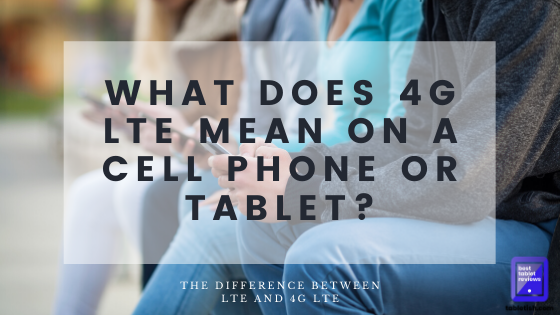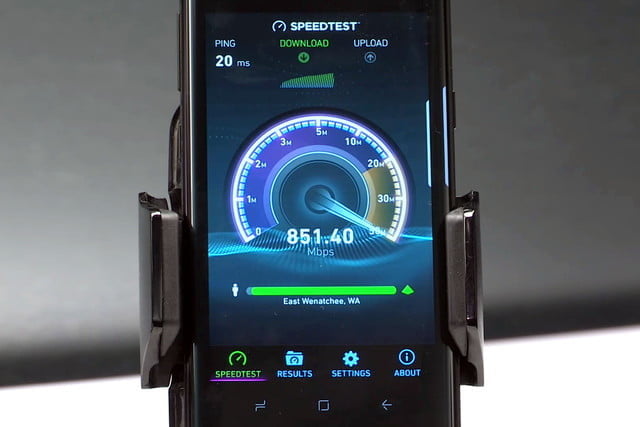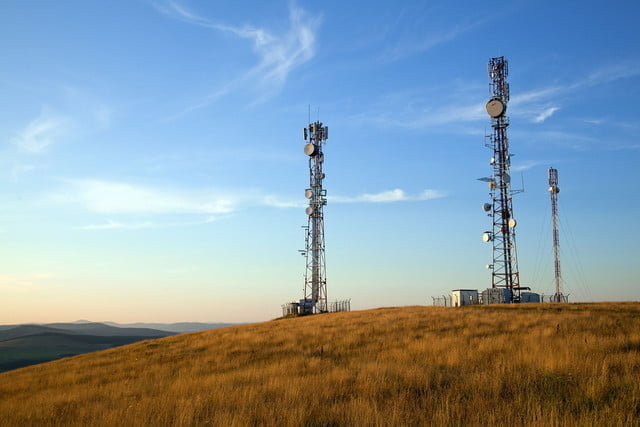Physical Address
304 North Cardinal St.
Dorchester Center, MA 02124



Suddenly smartphones dominated telecommunications and thus began to influence other industries, which looked for ways to reach their customers and vice versa. More and more people make their mobile phones and tablets their favorite device for internet access.
So, still wondering what does 4G LTE mean on a cell phone or a tablet? Hold your horses, we’ll be there in a bit.
Due to the growing need to carry out more and more tasks on the internet with mobile phones, the technology has been improving since the first generation of analog 1G phones during the 1980s and 2G with the advent of digital telephony, to reach the current 4G technology of which we are speaking in this article.
In simple and conventional terms, 4G is only the fourth generation of wireless mobile telecommunication technology which makes it the natural successor of 3G, and thanks to its high download speed it becomes, in theory, the ideal speed level for services such as high definition video calls, live streaming, geolocation and the possibility to play online. With 4G the user receives reliable and high-speed internet connectivity on different electronic devices, such as tablets and smartphones, among others.
Although the fact that it is faster than 3G does not immediately convert it to 4G. When it was decided to use the 4G nomenclature, the International Telecommunication Union-Radiocommunications (ITU-R) introduced several technical requirements so that a network could be called 4G. One of the features of the 4G network was that a connected device, such as a smartphone or a tablet must have a maximum of at least 100 megabits per second, and for more stationary uses, such as hot-spots, at least 1 gigabit per second.

However, the ITU-R realized that it had set difficult goals to achieve and soon realized that the bar had been set too high. Despite this, ITU-R allowed the commercialization of the 4G name as companies use more advanced technology and there are improvements in internet speed.
So, why this happened?
When these standards were announced, these speeds were unknown in the practical world, because they were meant to be a target for technology developers, a point in the future that marked a significant leap over current technology. Over time, the systems that power these networks have been updated, not only because new transmission methods have reached products, but because previously established 3G networks have been improved to the point that they can be classified as 4G.
Long Term Evolution (LTE) is a standard for high-speed wireless communication. LTE networks offer lower speeds than a true 4G network can offer. It began to be used commercially after ITU-R realized that the minimum speeds set for 4G networks were far from the reach of service providers so the marketing of the 4G LTE name began with the permission of the regulatory authority, an opportunity that mobile carriers did not squander, especially in developing countries, effectively attracting customers with the much-revered term ‘4G’ attached to LTE, without the network reaching the speed required for the coveted designation.
LTE stands for Long-Term Evolution, and is not so much a technology in itself, but the path taken to achieve 4G speeds. For a long time, when your phone displayed the “4G” symbol in the top right corner, it really wasn’t.
When ITU-R set the minimum speeds for 4G, they were relatively unattainable, despite the huge amount of money that technology manufacturers put in to achieve them. As a result, the regulatory body decided that LTE, the name given to the technology used in the search for those standards, could be labeled as 4G if it provided a substantial improvement over 3G technology.
Immediately, operators began announcing their connections as 4G LTE, a marketing technique that allowed them to claim next-generation connectivity without first having to reach the actual figure required (something like claiming that NASA had landed on the Moon because it got quite close and the spacecraft that took them there was much better than the previous space shuttle).
However, it is not entirely misleading, despite the inconsistent speeds depending on the location

and the network and that the difference between 3G and 4G is immediately noticeable.To make things even more confusing, you’ll probably also come across LTE-A at some point. This acronym stands for Advanced Long-Term Evolution, and takes us one step closer to 4G.It offers faster speeds and greater stability than normal LTE, is backward compatible and works by adding channels, so instead of connecting to the most powerful signal in your neighborhood, you can download data from multiple sources at the same time.
So when talking about the difference between lte and 4G lte the most relevant question here is, can you actually notice a real difference between 4G and 4G LTE networks? Is the speed to load a page or download an app to your handheld tablet or cell phone device much faster if you have lte technology built-in? Probably not, unless you live in the right area. While the difference between slower 3G networks and new 4G or 4G LTE networks is certainly very noticeable, many of the true 4G and “4G” networks have upload and download speeds that are almost identical. The launch of LTE-A has made a difference for some, but its performance may vary. LTE-A was the fastest connection available for wireless networks for a while, but we’re starting to see 5G networks start deploying in certain cities.
Although an established network architecture, 4G connectivity requires two components: a network that supports the required speeds and a device that can connect to that network and download information at a sufficiently high rate. Just because a phone has 4G LTE connectivity doesn’t mean you can get the speeds you want, just as buying a super-sports car doesn’t mean you can exceed highway speed limits.

Before operators could actually offer LTE speeds in important areas, they already sold phones that had the capabilities they would need to reach the desired speeds, and then began deploying the service on a limited scale. Now that LTE service is quite extended, this is no longer a problem.
Operators are already testing the fifth generation of mobile broadband connectivity, 5G, but much remains to be done, even when some phone manufacturers are starting to reveal 5G-capable devices. There are high expectations about the new 5G standard that is already being implemented although infrastructure will take time and large investments to be widely operational. Judging by what has happened with 4G, how much of an improvement was over 3G, and that 5G is already slowly but surely taking its place, it may not be long before we have a new network connection and telecommunications standard.